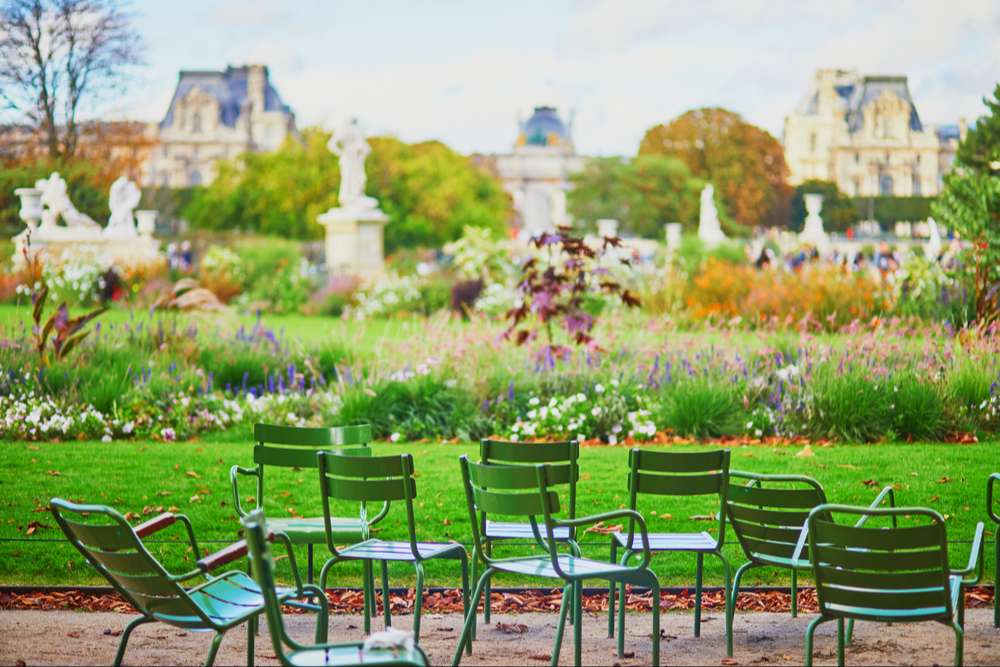Every year in September, the Garden Festival is an opportunity to discover or rediscover the most beautiful gardens in France during sumptuous walks. La Cadet Résidence takes this opportunity to address a more unusual aspect of Parisian green spaces, by revealing 7 anecdotes about Paris gardens .
A work by Picasso stolen from Square Laurent-Prache
In 1941, the famous Spanish painter Pablo Picasso created a bronze statue, in homage to Dora Maar, his companion and muse of the moment. This work, dedicated to Guillaume Apollinaire, was then offered to the city of Paris in 1959. The Head of Dora Maar was then exhibited in the Laurent-Prache square , in the 6th arrondissement of Paris. It remained there for 40 years without problem, until March 31, 1999. That day, we discovered that the bronze statue weighing almost 80 kilos had disappeared .
Despite numerous searches, it remained untraceable until 2000, when the statue mysteriously reappeared…in the town hall of Osny , in Val d’Oise! The mayor admitted to having recovered this statue without knowing its origin, even though municipal police officers had found it in a ditch.
Back in Paris in 2001, the bust of Dora Maar returned to its square, without us ever knowing what had happened to it.
The back door to Balzac’s garden
Many literature lovers like to go to Balzac’s house , in the 16th arrondissement, to discover the writer’s real home, and the perfect reconstruction of his place of life and work. Arriving on site, you can also admire the author’s pretty little garden , offering a breathtaking view of the Eiffel Tower.
The unusual anecdote then concerns the little hidden door that can be seen at the bottom of the garden. This is how Balzac managed to escape his creditors, when he was really broke.
The garden of the Palais Royal: the origin of the expression “at midday sharp”
Everyone has used the expression “at midday” at least once in their life. But do you know what it means, and what is its origin?
It dates back to the year 1786, near the garden of the Palais Royal. A watchmaker neighbor invented a device allowing a small cannonball to be launched at noon sharp ! To do this, he used a magnifying glass and a cannon loaded with black powder. At noon, when the sun was at its zenith, the concentration of hot rays through the magnifying glass made it possible to light the fuse and trigger the mechanism.
Nearby, in the garden of the Palais Royal , visitors could only notice that each time the sundial indicated noon, a small cannon shot “fart”. So people met at “hot noon”!
The watchmaker’s device was stolen in 1998, then reinstalled in 2004, but without the magnifying glass. The cannon now thunders mechanically, at high noon, a few Wednesdays a month.
Alpine gardens in the heart of Paris
We all know that each plant requires specific conditions to grow. But several Parisian gardeners have challenged themselves to defy the laws of nature, by growing alpine plants on the Parisian plains . The gardeners of the Floral Park went to look for seeds in the French Alps and rocks in the Pyrenees, to reproduce the growing conditions of vegetation on high summits.
In the Bagatelle garden , trees and plants from the south were transported and replanted in the heart of Paris. In this atypical green space, we find Mediterranean vegetation , with holm oaks, Balearic boxwood, and even shrubby heather.
Sparkling water in Parisian parks
Water fountains are present everywhere in Paris: in parks, in the streets and in gardens. They allow passers-by to quench their thirst while enjoying free, fresh drinking water. To make these water points elegant, numerous fountains are erected, such as the Mât Source and its mister, the Albien fountain , which draws its water from the water table more than 600 meters deep, or the sublime Wallace Fountain .
But did you know that some Parisian fountains also dispense sparkling water ? The first was installed in 2010, in the Reuilly garden , making Paris the first city to offer free sparkling water from public fountains. Since then, 17 new sparkling water fountains have been installed in the capital.
Seeds from the Plant garden under close surveillance
Perhaps you have already visited the Jardin des Plantes . Maybe you even feel like you’ve come full circle. However, did you know that part of this park in the 5th arrondissement was under close surveillance? And the objects of all attention are more than surprising, since they are thousands of seeds from France and Europe .
The seed bank of the National Museum of Natural History has no less than 25,000 seeds, collected since 1840. They are all placed under high vigilance, with the help of the customs service, the police, and even the poison control center .
The Bercy Park grain library open to the general public
If the grain library in the Jardin des Plantes is closed to the public, that of the Parc de Bercy , in the 12th arrondissement, is intended for visitors and gardening enthusiasts. Few people know it, but on the door of the gardening house there is a rack shelf in which amateur gardeners place bags of various seeds . Individuals can then help themselves, in exchange for other packets of seeds. Depending on the seasons, you can then find something to flower your balconies or feed your vegetable garden: lettuce seeds, hollyhock seeds, pumpkin seeds, etc.
Do you like unusual visits to Paris? You can then set off to discover these Paris gardens with their well-hidden little secrets , and pass on these curiosities to those around you.



